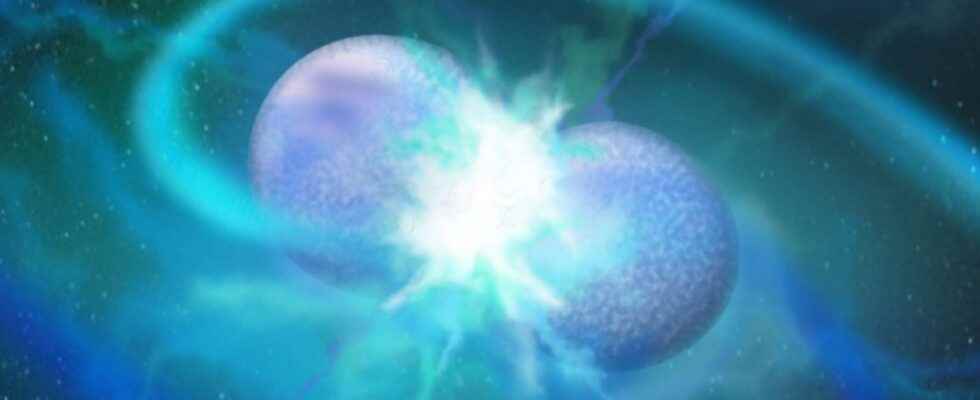You may also be interested
[EN VIDÉO] Incredibly realistic simulation gives birth to stars To unlock the secrets of star formation, astronomers rely on simulations. The one developed by a team of researchers including astrophysicists from Northwestern University (United States) is the most realistic and the highest definition to date. It shows a mass of gas – here, 20,000 times the mass of the Sun, but it can be modulated, from tens to millions of times the mass of the Sun – floating in the galaxy. As the gas cloud evolves, it forms structures that collapse and break into pieces. They end up forming stars. Once stars form, they shoot outward jets of gas from both poles, piercing through the surrounding cloud. The process ends when there is no more gas to form more stars. © Michael Grudic, Northwestern University
Of the’hydrogen and of thehelium. These are the two chemical elements that astronomers found in principle essentially on the surface of the stars. Basically because researchers at the University of Tübingen (Germany) have just discovered two stars — baptized PG1654+322 and PG1528+025 — covered with carbon and D’oxygen.
Make no mistake about it. These elements, carbon and oxygen, form very classically in stars. By helium fusion. But the temperatures — about 10 times higher than those prevailing on the surface of our Sun — and the observed radii of the two stars cited here by astronomers suggest that they are still in the so-called helium fusion phase. Understand that they continue to burn helium in their core. Even as their surface says they’re done nuclear reactions.
A team of German astronomers have discovered a strange new type of star covered in the by-product of helium burning. It is possible that the stars might have been formed by a rare stellar merger event.
Learn more at the link below https://t.co/8F6NPrN1HM
Nicole Reindl pic.twitter.com/Y5AAsJlhMc
— Royal Astronomical Society (@RoyalAstroSoc) February 14, 2022
Stellar evolution models to review
From researchers from the University of La Plata (Argentina) and the Max Institute Plank (Germany) suggest that these stars may have formed as a result of a rare type of stellar collision. In the binary systems, it frequently happens that stars at the end of their life, white dwarfs, end up falling on each other. Astronomers now thinking that with stars of masses very specific, a white dwarf rich in carbon and oxygen could be disturbed and collide with a star still rich in helium.
“These new stars pose a serious challenge to our understanding of stellar evolution”confides Klaus Werner, professor at the University of Tübingen, in a press release from the Royal Astronomical Society. They could lead to the establishment of new models that would better define the evolution of binary systems, especially. And the way in which the stars that compose them see their masses change over time.
Interested in what you just read?
